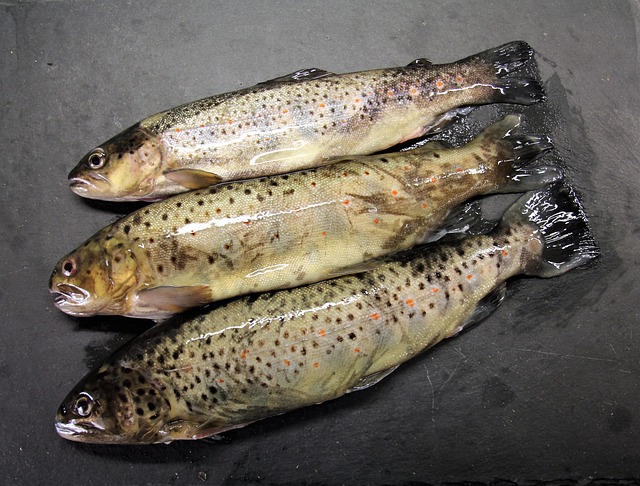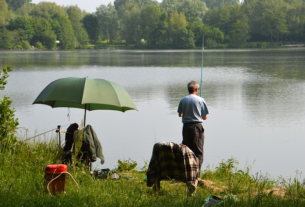When it comes to river trout fishing, choosing the right fishing line is a critical aspect of successful catch tactics. A fluorocarbon line is ideal for clear, shallow waters due to its near-invisibility, while braided lines offer high sensitivity and strength for murkier conditions or larger trout. Monofilament lines provide a good balance of strength, sensitivity, and versatility. The key is selecting the right line weight and diameter based on the size of the trout you're targeting and the environmental factors at play. A finer line can help with precise casting, while a heavier line may be more resilient to abrasion. For trout that are cautious or have been pressured by previous anglers, a fluorocarbon line is advantageous due to its low visibility. The best pound test range for river trout fishing is generally between 4 to 10 pounds, offering both sensitivity and strength. Adhering to these trout fishing tips can significantly improve your catch rates and enhance your overall experience in river trout fishing scenarios.
When it comes to trout fishing, selecting the right fishing line can significantly influence your success on river banks. This article delves into the nuances of trout behavior and provides insightful trout fishing tips to aid in effective line selection. We’ll explore the various types of fishing lines and discuss their suitability for river trout fishing, ensuring you’re well-equipped to catch these elusive creatures. With a focus on key factors to consider when choosing a line, and a step-by-step guide to selecting the ideal fishing line for your next trout excursion, you’ll be prepared to enhance your angling experience. Whether you’re a novice or an experienced angler, these tips will help you achieve success in catching trout.
- Understanding Trout Behavior for Effective Line Selection
- Types of Fishing Lines and Their Suitability for River Trout Fishing
- Key Factors to Consider When Choosing a Fishing Line for Catching Trout
- Step-by-Step Guide to Selecting the Ideal Fishing Line for Your Next Trout Excursion
Understanding Trout Behavior for Effective Line Selection

When selecting the appropriate fishing line for trout, understanding their behavior in different environments is paramount. River trout fishing presents unique conditions where stealth and finesse often outperform power and speed. Trout are wary creatures with acute senses, making them challenging yet rewarding to catch. A clear grasp of their habits, such as their preference for certain water temperatures, feeding patterns, and the types of insects they prefer, will inform the best approach for effective line selection. For instance, in clear, shallow waters where trout are spooky and selective, a fluorocarbon line is ideal due to its near-invisibility underwater, reducing the risk of scaring off the fish with a shadow on the line. On the other hand, in murkier conditions or when targeting larger, more aggressive trout, a braided line might be the better choice for its high sensitivity and strength. Trout fishing tips that emphasize the importance of line selection based on water clarity, trout size, and behavior will enhance an angler’s chances of successful catch and release practices in river trout fishing scenarios. Anglers should also consider the lure or bait presentation and how it interacts with the chosen line to ensure a natural and effective presentation, which is crucial for catching trout in various riverine settings.
Types of Fishing Lines and Their Suitability for River Trout Fishing

When venturing into river trout fishing, selecting the appropriate fishing line is crucial for successful trout catching. There are several types of fishing lines available, each with its own set of characteristics that make it suitable for different conditions and techniques. Monofilament lines, for instance, are a popular choice due to their versatility and affordability. They offer a good balance between sensitivity and strength, making them ideal for detecting the subtle bites of trout. Monofilament also floats, which can be advantageous when fishing on the surface or dealing with currents that might carry your bait away from the strike zone.
For those who prefer a line with less memory and greater sensitivity, fluorocarbon lines are an excellent alternative. These lines have a high refractive index, which reduces their visibility underwater, giving you an edge when fishing in clear or highly pressured waters. Fluorocarbon’s resistance to abrasion also makes it a durable choice for river trout fishing, where the line may encounter rocks and other underwater obstacles. Additionally, braided lines are another option, known for their high strength-to-diameter ratio and excellent sensitivity, which can help in detecting even the most tentative of trout nibbles. However, because they have no stretch, braided lines require a leader to prevent spooking wary trout. Each type of line has its pros and cons, and the choice between them should be guided by factors such as water clarity, weather conditions, and personal preference in terms of feel and casting performance. Trout fishing tips often emphasize the importance of selecting a line that complements the specific river trout fishing situation you’re encountering for a successful catch.
Key Factors to Consider When Choosing a Fishing Line for Catching Trout

When targeting trout in riverine environments, selecting the appropriate fishing line is crucial for a successful catch. Trout fishing tips often emphasize the importance of line sensitivity and strength, as trout can be wary and require a delicate approach. A high-quality monofilament or fluorocarbon line that blends with the water’s clarity is ideal for river trout fishing. These lines minimize visibility underwater and offer the necessary balance between strength and flexibility to handle the varied currents and structures in a river. The diameter of the line should be chosen based on the conditions; thinner lines can be beneficial for accurate casting, while thicker ones may provide greater strength and abrasion resistance. Additionally, the line’s stretching properties play a role; a line with minimal stretch allows for better feel and control when setting the hook, which is essential when maneuvering around river obstacles and ensuring a clean catch.
Furthermore, the type of trout you’re targeting—whether it’s brown, brook, or rainbow trout—can influence your selection. For example, fluorocarbon lines are often preferred for their lower refractive index, which makes them nearly invisible underwater and ideal for spooky, pressured fish. The line’s test, or breaking strength, should be matched to the size and habit of the trout you’re aiming to catch; lighter tests are suitable for smaller, more delicate trout species, while heavier lines can handle larger, more robust specimens. Incorporating these trout fishing tips into your gear selection will enhance your river trout fishing experience and increase your chances of a successful outing.
Step-by-Step Guide to Selecting the Ideal Fishing Line for Your Next Trout Excursion

When targeting river trout, selecting the appropriate fishing line is crucial for catching these elusive fish effectively. To begin with, consider the conditions of the waterbody. For clear, shallow rivers where trout are spooky, a fluorocarbon leader or main line is often the best choice due to its near-invisibility underwater, which allows for stealthy presentations. Fluorocarbon also has excellent abrasion resistance, which is important when fishing around structure like rocks and trees where trout tend to hide.
Monofilament lines, on the other hand, offer more stretch than fluorocarbon, which can be advantageous when casting as it helps absorb shock and reduce the risk of spooking wary trout in river environments. When using monofilament, select a clear or green version to maintain a low profile in the water. For those who prefer braided lines for their high sensitivity and strength, consider that they are highly visible and should be used with a flouro leader for stealth. In terms of pound test, typically, a 4 to 10-pound test is ideal for river trout fishing, as it provides enough sensitivity to detect subtle bites without breaking under the force of a fighting trout. Always remember that the right line for trout fishing can vary depending on local conditions and personal preference; therefore, it’s essential to experiment with different types of lines to find what works best in your specific river trout fishing situation.
When it comes to mastering the art of trout fishing, selecting the right fishing line is a pivotal decision that can significantly influence your success. This article has delved into understanding trout behavior and the various types of fishing lines suitable for river trout fishing. We’ve explored key factors to consider when choosing a line for catching trout, ensuring you’re equipped with the knowledge to select the ideal fishing line for your next trout excursion. By applying the tips outlined here, you’ll be well-prepared to enhance your trout fishing experience. Remember, the right line can make all the difference between an empty net and a successful day on the river.



